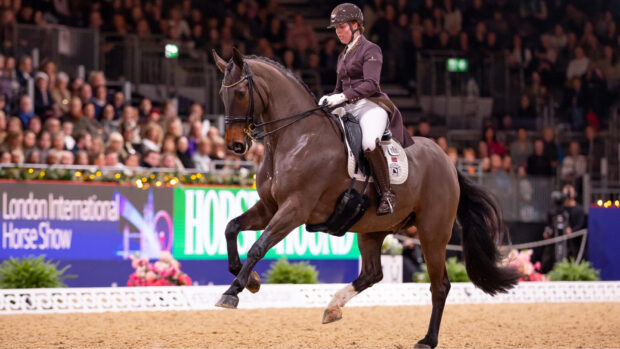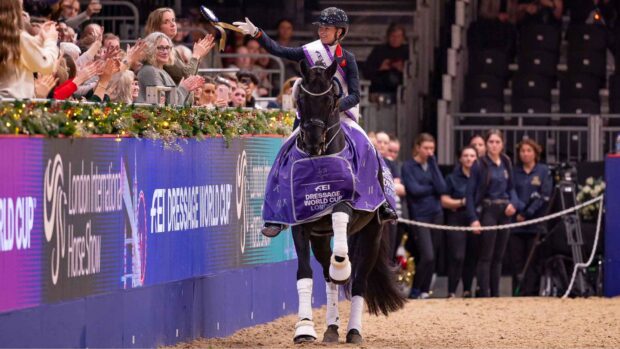Equine vet Edward Busuttil MRCVS helps explain how to feed the resting horse to aid recovery and maintain welfare
Understanding how to feed a horse on box rest is a challenge for horse owners that requires the horse’s nutritional requirements to be balanced with their welfare needs. An effective feeding strategy must reduced the horse’s calories while continuing to support their digestive, immune and psychological health. Accurate weight estimation, careful energy management and thoughtful forage preparation are key to avoiding complications.
As box rest for horses is normally linked to an injury or illness, feeding for recovery involves more than simply reducing the food ration – it means using nutrition as a tool to preserve wellbeing, reduce stress and promote healing. Careful planning and regular monitoring can help horses on box rest to recover safely and comfortably and return to health with fewer setbacks.
How to feed a horse on box rest
Stabled horses are denied natural behaviours such as grazing, walking and socialising. This can lead to stereotypies like crib-biting, weaving or box walking, alongside signs of anxiety and boredom. Physically, reduced movement can result in weight gain, muscle loss, a slowing of the digestive tract and gastric ulcers.
Nutrition plays a critical role in mitigating these effects – an appropriate feeding plan must address both reduced energy demands and support mental and digestive health.
Accurate body weight estimation is essential for planning a suitable diet. It guides forage allocation, nutrient intake and tracking of weight changes. The gold standard is a weighbridge, but most owners use weigh tapes (like this one) or body measurements. Consider clipping a couple of patches to ensure that your weigh tape consistently passes through the same areas, to avoid artificially “changing” your horse’s weight.
An often used formula is: Weight (kg) = (heart girth² × body length) / 11,880
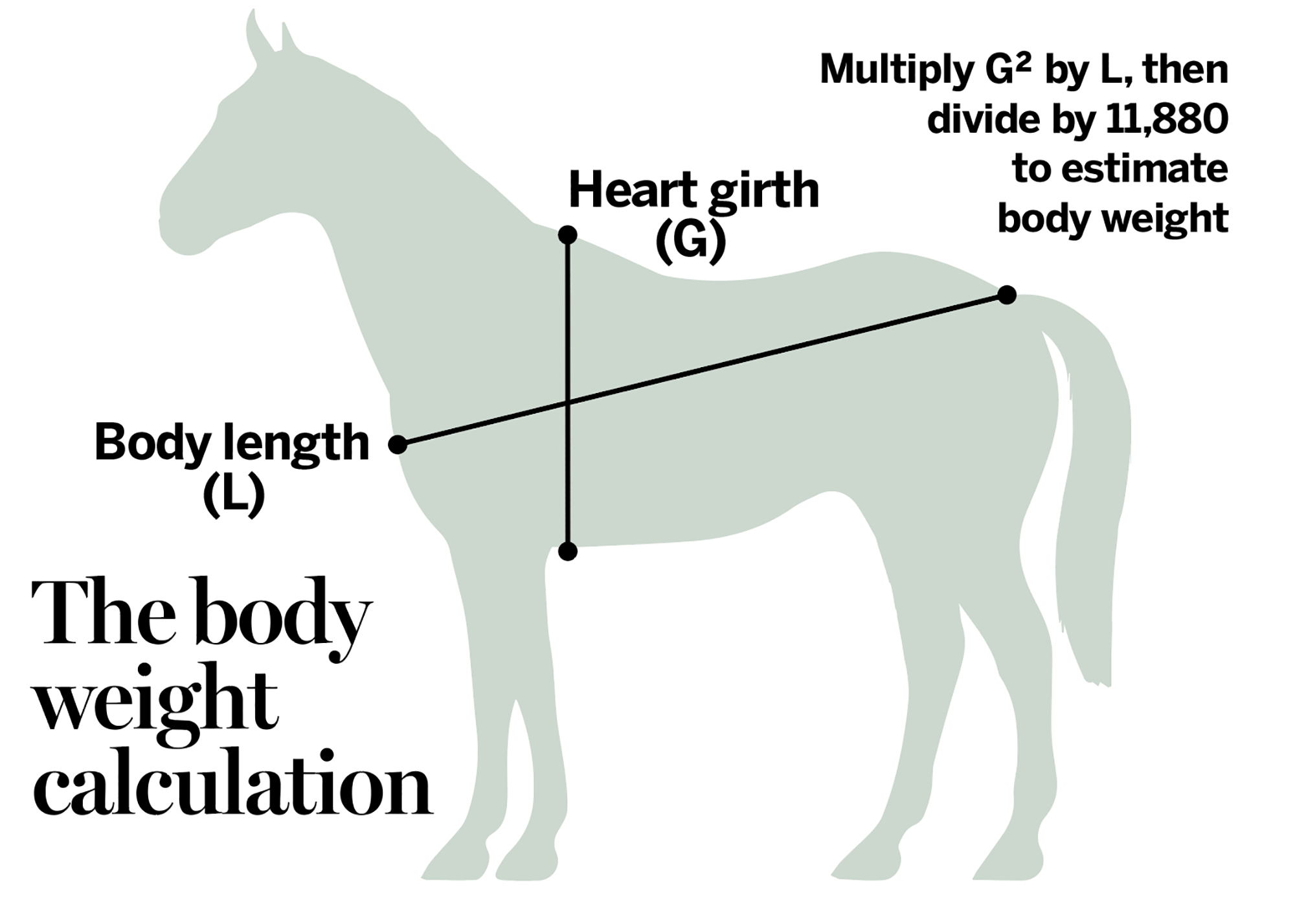
Although not exact, it provides a useful estimate for monitoring trends over time. Fluctuations in weight, particularly when a horse is on box rest for an extensive period of time, should not be too concerning as muscle mass decreases and posture changes also result in slight changes with your measurements.
Assessing their body condition score could be equally beneficial – ideally, you should be able to feel your horse’s ribs when running your hands along their side, but not be able to see them.
Keep a weekly diary so you’re able to make regular, small tweaks, decreasing the risks of stress and colic associated with sudden alterations to the diet.
With reduced physical activity, energy requirements drop. According to NRC (National Research Council) guidelines, horses need 12.5–15.2MJ of digestible energy (DE) per 100kg body weight daily. Therefore, a 500kg horse typically needs 62.5–76MJ/day under maintenance conditions, but those on box rest often require less. Good-doers may need further reductions to avoid weight gain.
Feeding even slightly more than needed can cause unwanted weight increases, especially with calorie-dense forage types or unnecessary concentrates.
How to support normal gut function
Fibre plays an essential role when feeding a horse on box rest. It maintains healthy gut function, limits digestive issues like impaction colic and ulcers and, as a long-lasting food source, supports mental wellbeing. A horse’s digestive system slows with reduced movement, so continuous fibre intake – as forage, like hay or haylage – is crucial to keep the gut moving.
Fibre also helps satisfy the horse’s natural urge to chew, reducing boredom and stress while confined. Providing adequate, good-quality fibre is key to keeping a box-rested horse healthy physically and mentally. Forage analysis is available to check quality, and this may be particularly useful in cases of long-term box rest when a consistent hay source will be provided. Poor-quality hay can contain dust and mould, which may trigger or worsen equine asthma.
Soaking hay reduces dust and water-soluble carbohydrates (WSC), helping manage laminitis or weight gain risk, but also leaches minerals like calcium, and palatability and hygienic quality are reduced if hay is soaked for too long. Long soaking (six to eight hours) can encourage microbial growth, especially in warm weather. Soaking and repeatedly lifting and submerging hay for 20 minutes can effectively reduce WSC.
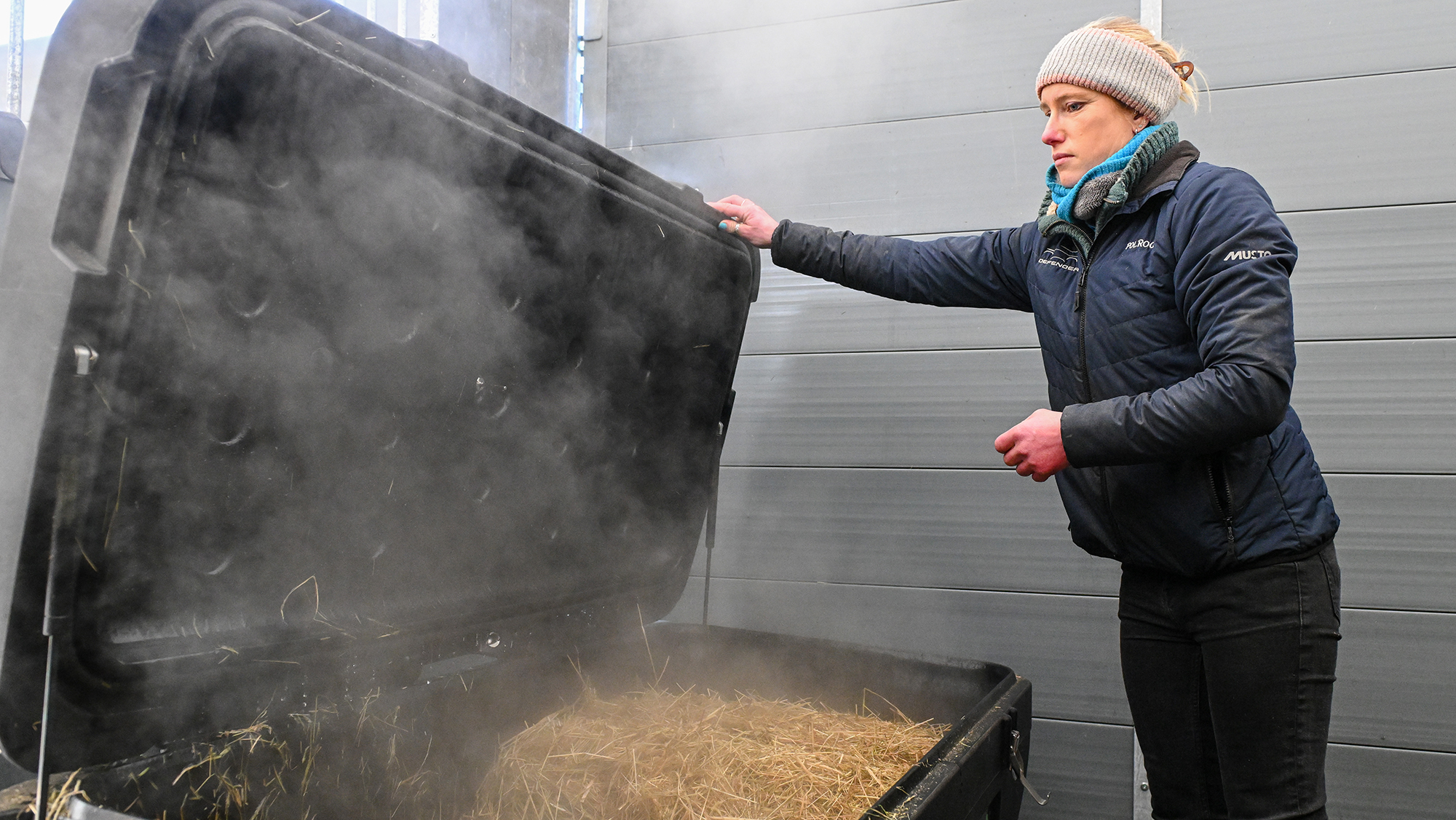
Steaming hay preserves more nutrients than soaking and kills mould spores, bacteria and dust mites. Credit: Peter Nixon
Steaming hay at over 90°C using a commercial hay steamer effectively kills mould spores, bacteria and dust mites, improving respiratory safety. Steaming preserves more nutrients than soaking but does alter protein structure, reducing digestibility. Total crude protein remains stable, but digestible protein may drop by more than 40%, which may require dietary adjustments.
A constant supply of clean fresh water should always be available, alongside a high-forage diet. When temperatures drop, adding some hot water to water buckets may increase the amount the horse drinks. Providing water in buckets for horses on box res, rather than using automatic drinkers, will allow their intake can be monitored.
Avoiding gastric ulcers during box rest
Box rest greatly raises the risk of equine gastric ulcer syndrome, driven by stress and amplified by improper feeding practices. Horses are continuous grazers with stomachs that secrete acid constantly. Without regular forage, stomach acid can damage the unprotected, non-glandular part of the stomach.
To mitigate this, horses should have constant access to low-calorie forage to promote chewing and saliva production, which helps buffer stomach acid. Concentrates, especially high-starch feeds, should be avoided when feeding a horse on box rest.
Alfalfa, with its high calcium content, can help buffer stomach acid. Different companies provide alfalfa chaffs of various flavours to provide food-based enrichment. Alternatively, straw-based chaffs are also available, rich in fibre and low in energy. Unmolassed sugar beet provides digestible fibre and natural pectin and lecithin, which soothe the stomach lining and support gut health in ulcer-prone horses.
Read more about feeding horses to avoid gastric ulcers.
How to feed a good-doer on box rest
With horses that tend to maintain or gain weight easily, the lack of exercise associated with box rest can lead to significant increase in their body condition. It is important to reduce their calorie intact while continuing to provide the essential nutrition to maintain health. This is a necessity with cases where horses are confined owing to laminitis or where horses have an diagnosed with metabolic issues, such as PPID and EMS.
In addition to feeding soaked hay, having hay tested will help owners chose a forage that is low in WSC and therefore less likely to result in weight gain. Feeding forage using small-holed haynets and slow feeders to make the hay ration last as long as possible is also recommended.
Feed balancers can be really useful when feeding a good-doer. Including a feed balancer when feeding a horse on box rest – or vitamin and mineral supplement – alongside a straw-based chaff will ensure the horse receives all the micro nutrients needed during their period of recovery without any extra calories.
How to maintain body condition during box rest
If your horse is a more highly strung type, who struggles with confinement and is likely to worry their weight off during a period of box rest, forage should still be the primary feed source. Good quality hay fed ad-lib, ideally in multiple feed stations located at different heights around the stable, will encourage the horse’s natural foraging instinct and serve to provide enrichment.

Feeding ad-lib hay from different heights including the floor can help encouraging foraging. Credit: Lucy Merrell
If additional calories are required to maintain condition, a fibre- and oil-based concentrate feed will provide extra calories without the risk of disrupting the horse’s gut by feeding starch. High fibre and oil conditioning feeds are also less likely to encourage undesired excitable behaviour when the horse needs to rest. Adding a digestive feed supplement will also help the horse to get the most out of the nutrition provided.
How to promote healing on box rest
Horses recovering from trauma may need more protein in their diet, but most on box rest benefit from moderate-protein hay (under 10%) and diets tailored to actual needs. Alfalfa is a high-protein forage (over 15%) and may increase urination if fed in excess.
Excess protein in a low-exercise diet can lead to increased urea production and higher urinary output. This results in wetter bedding, stronger ammonia odour and possible irritation to the respiratory tract and hooves. If your horse experiences increased urination, wood shavings can provide a far more absorbent bed than straw – but this does not negate the need for frequent mucking out and hoof care.
How to reduce boredom
Box rest restricts natural foraging behaviour, which can increase stress and boredom. Gustatory enrichment – food-based mental stimulation – can reduce frustration and support digestive health.
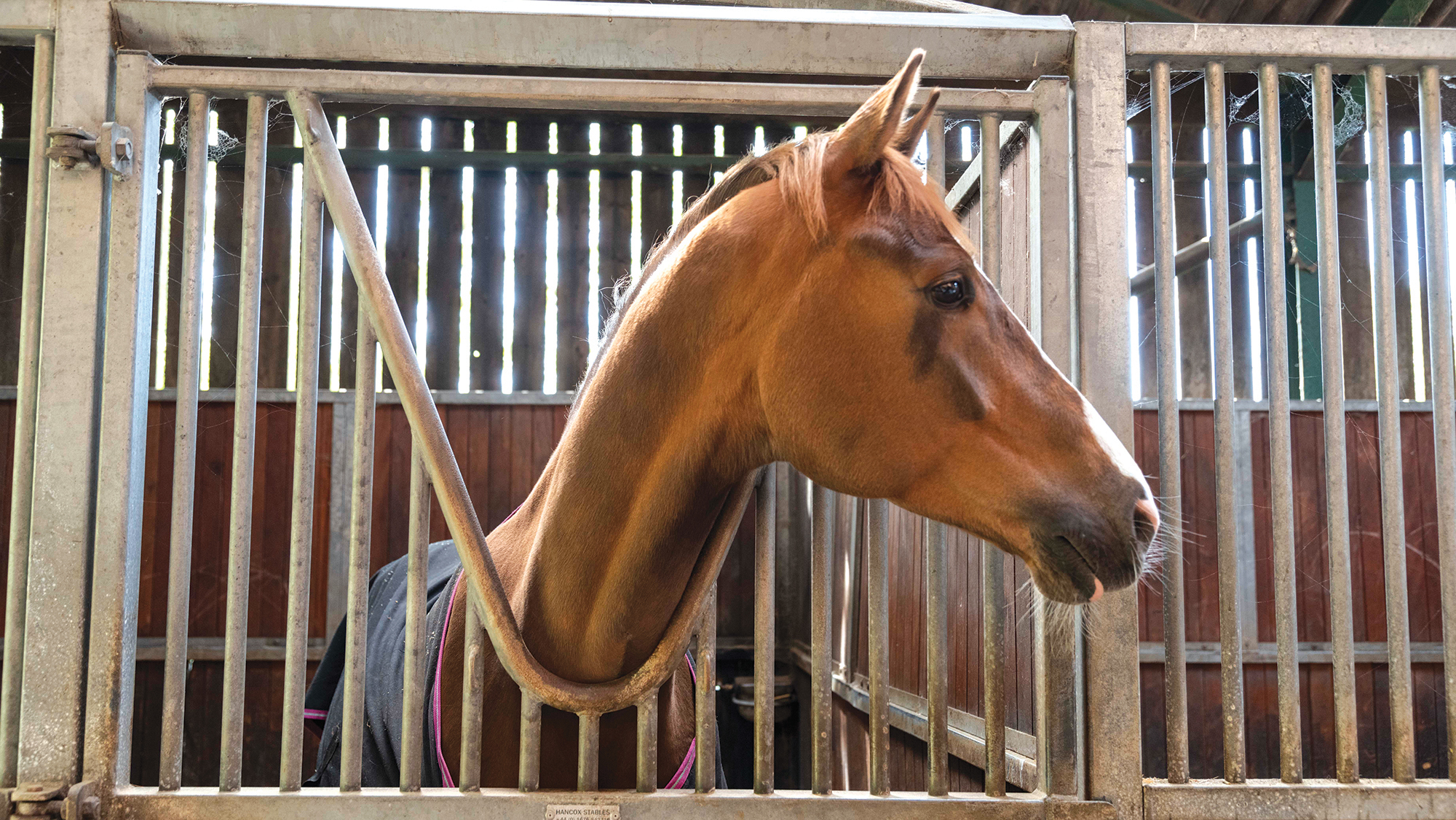
Boredom can be a problem for horses on box rest. Credit: Andrew Sydenham
Offering forage in multiple small nets around the stable, changing hay types or using slow feeders can promote engagement. Low-sugar treats like swede or celery, or hay-based, low-sugar licks, provide sensory stimulation without excess calories. These strategies mimic natural feeding patterns and improve mental wellbeing, keeping horses happier and healthier when stabled.
You can also consider purchasing hay blocks with chamomile (like this one) or making ice blocks with shredded carrot and apple during the warmer months of the year.
There are a range of stable toys and other boredom busters for horses available to help entertain your horse during a period of enforced rest.
How to avoid respiratory problems
Stabled horses are at increased risk of developing respiratory issues, particularly if ventilation is poor or the environment is dusty. Conditions such as recurrent airway obstruction (RAO), commonly known as heaves, can be exacerbated during prolonged periods indoors.
The choice of bedding type and forage is particularly important. Traditional straw can be dusty and should be replaced with low-dust alternatives such as cardboard, paper or high-quality shavings, including lavender-scented brands.
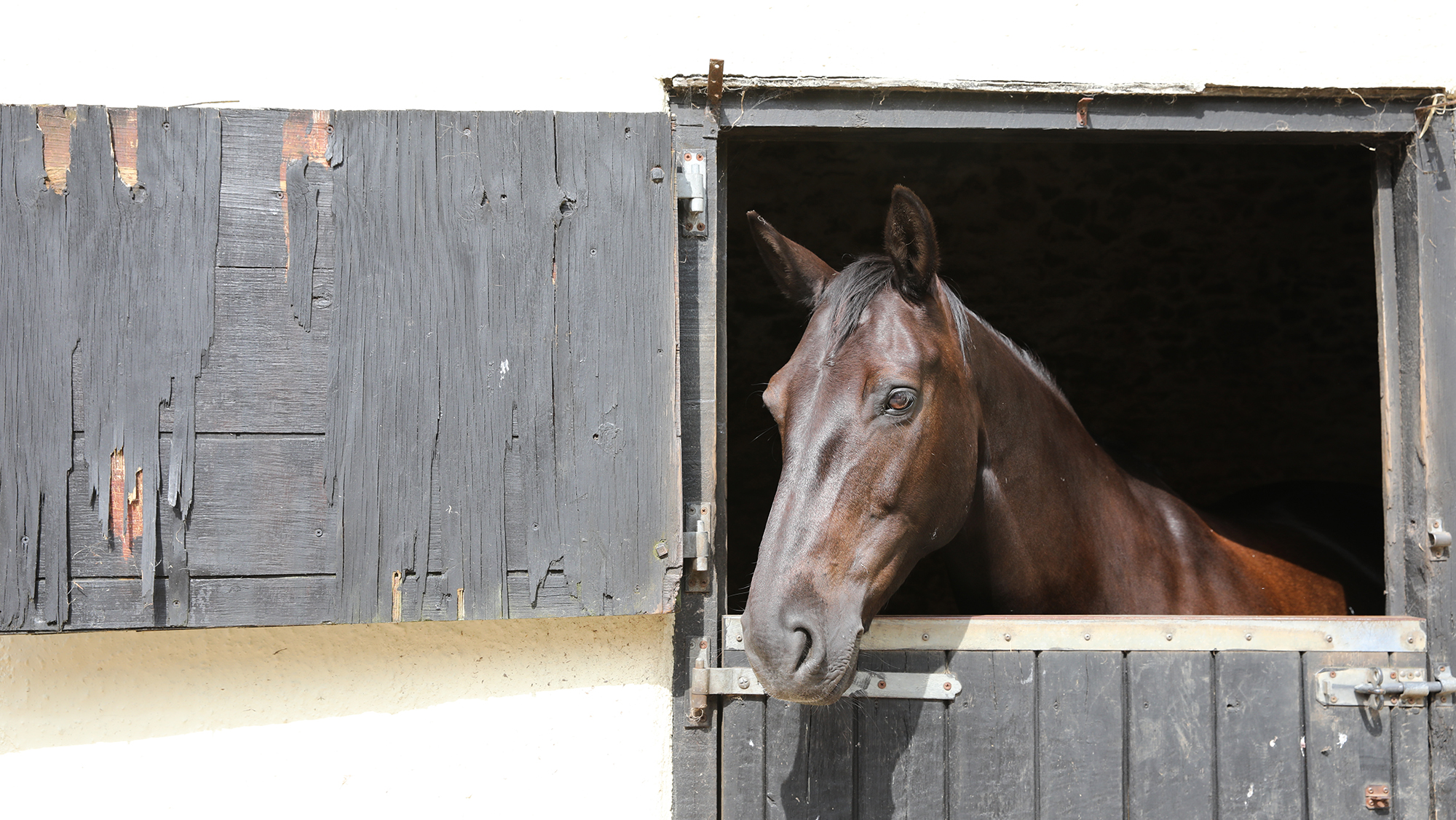
Plenty of air important for horses on box rest. Credit: Emma Herrod Photography
Hay should be soaked or steamed to reduce airborne particles and haylage may be a suitable alternative for some horses. Stable ventilation must be optimised without creating drafts. Open doors, high windows and the use of fans (when safe) can help improve airflow, as well as cleaning away cobwebs and bird nests.
Ammonia build-up from urine is another concern, as it can irritate the airways. Frequent mucking out, and the use of absorbent bedding, can help reduce exposure.
Supplements for a horse on box rest
Targeted feed supplements for horses can support recovery in certain cases:
● digestive supplements with prebiotics and yeast support hindgut health, particularly if antibiotics have been used or if diet changes occur
● ulcer-prone horses may benefit from gastric supplements that contain gastroprotective agents such as lecithin, pectin and buffering compounds, although veterinary treatment may also be required
● omega-3 fatty acids from linseed oil or marine sources support joint and immune function
● vitamin E supplementation is often necessary during periods of box rest, as horses have reduced access to fresh forage. Vitamin E (as d-alpha-tocopherol) is a key antioxidant supporting muscle function, immunity and recovery. Deficiency can lead to stiffness or even neurological signs
● respiratory supplements can also help maintain respiratory health if your horse is at risk of respiratory disease. This can come in the form of omega-3s, MSM (methylsulfonylmethane; which decreases upper airway inflammation) and marshmallow root (which may help to reduce mucus build-up in the lungs)
Knowing how to feed a horse on box rest can be a challenge, but by making the right decisions you can help keep your horse happy and healthy during this period of enforced rest.
If you’re still unsure about feeding a horse on box rest, then we recommend speaking to an independent equine nutritionist. To find a nutrition specialist, visit the British Equestrian Trade Association’s equine nutritionist and feed advisor register.
- For more expert advice on caring for your horse in the best possible way, subscribe to the Horse & Hound website
You may also be interested in:

A guide to box rest — how to navigate this testing time
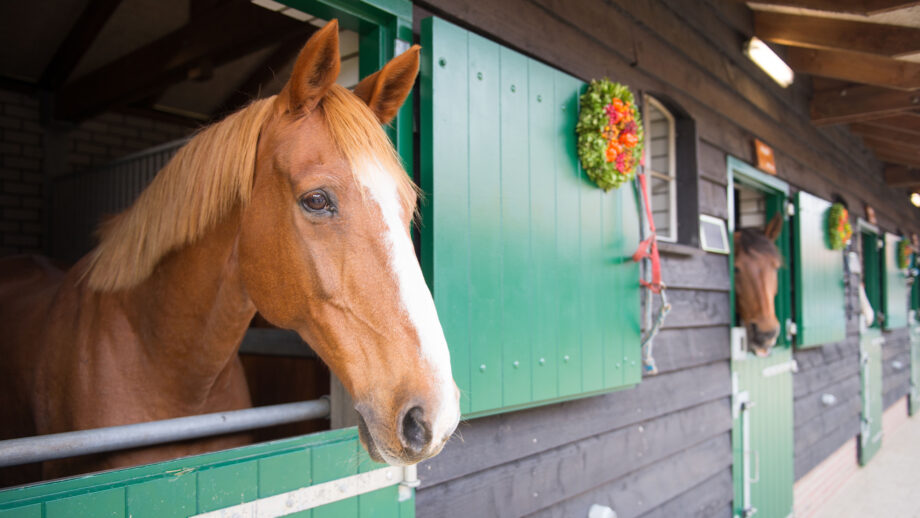
How to keep stabled horses happy and healthy

9 ways to stay sane if your horse is on box rest
Box rest — two words no horse owner wants to hear. Becky Murray finds out how we can keep our

Can feeding a balancer help a horse on box rest?

Filled legs in a horse on box rest: what you need to consider
Your horse's legs filling overnight is just one of the challenges that horse owners face when their horse is on
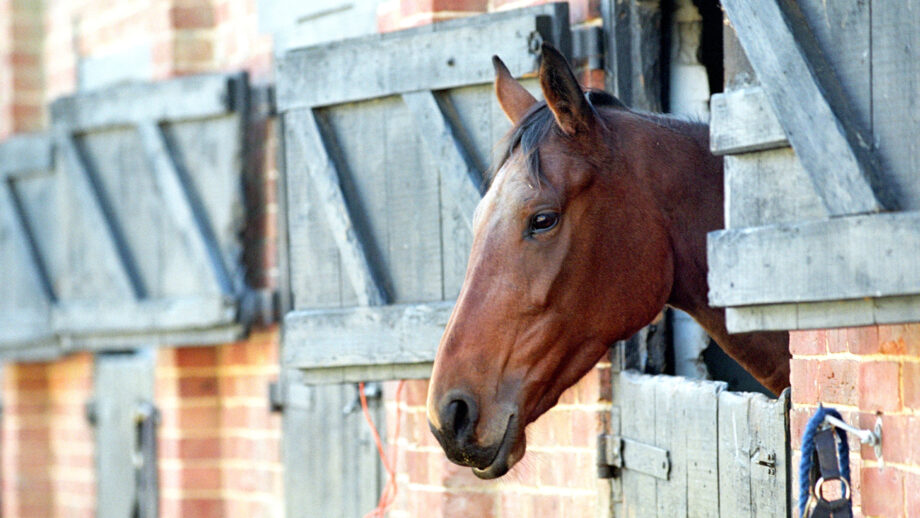
6 ways to beat boredom in stable-bound horses

Subscribe to Horse & Hound magazine today – and enjoy unlimited website access all year round



